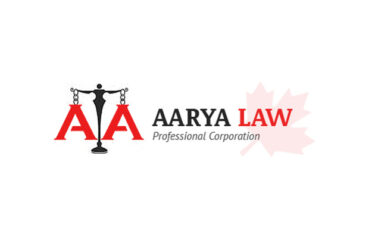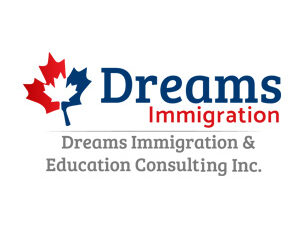What is Immigration Law in Canada?
Canada’s immigration system is one of the most structured and welcoming in the world, attracting over 400,000 new permanent residents annually. Canadian immigration law governs who can enter, work, study, or settle in Canada, balancing economic needs, family reunification, and humanitarian obligations. This article explores the foundations of Canadian immigration law, key programs, application processes, recent changes, and current challenges.
What Is Canadian Immigration Law?
Canadian immigration law consists of statutes, regulations, and policies that regulate:
-
Entry and exit of foreign nationals
-
Temporary residence (visitors, workers, students)
-
Permanent residence pathways
-
Citizenship acquisition
-
Refugee protection
-
Enforcement and removals
The primary legislation includes:
-
Immigration and Refugee Protection Act (IRPA) (2002)
-
Citizenship Act
-
Immigration and Refugee Protection Regulations (IRPR)
1. Temporary Residence Programs
A. Visitor Visas & Electronic Travel Authorization (eTA)
-
Most travelers need either a visitor visa or eTA (for visa-exempt countries)
-
Allows stays up to 6 months (extensions possible)
-
Super visas allow parents/grandparents 5-year stays
B. Study Permits
-
Required for programs longer than 6 months
-
Must prove acceptance at a Designated Learning Institution (DLI)
-
Eligible students can work 20 hours/week off-campus
C. Work Permits
Two main categories:
1. Temporary Foreign Worker Program (TFWP)
-
Employer-driven (requires Labour Market Impact Assessment – LMIA)
-
Proves no Canadian could fill the job
2. International Mobility Program (IMP)
-
LMIA-exempt (e.g., NAFTA professionals, intra-company transfers)
-
Includes Post-Graduation Work Permits (PGWP) for students
2. Permanent Immigration Programs
Canada admits permanent residents under three main categories:
A. Economic Immigration (60% of admissions)
1. Express Entry System
Manages three federal programs:
-
Federal Skilled Worker Program
-
Federal Skilled Trades Program
-
Canadian Experience Class
Process:
-
Create profile (scored via Comprehensive Ranking System – CRS)
-
Receive Invitation to Apply (ITA) in regular draws
-
Submit full application (processed in 6 months)
2. Provincial Nominee Programs (PNPs)
-
Allows provinces to nominate candidates meeting local labor needs
-
Enhanced nominations (600 CRS points in Express Entry)
-
Base nominations (separate application process)
B. Family Sponsorship (25% of admissions)
Canadians can sponsor:
-
Spouses/partners (12-month processing)
-
Parents/grandparents (lottery system)
-
Dependent children
C. Refugees and Protected Persons (15% of admissions)
Two main pathways:
-
Government-Assisted Refugees (referred by UNHCR)
-
Privately Sponsored Refugees
-
In-Canada Asylum Claims
3. Citizenship Process
Eligibility requirements:
-
Permanent resident status
-
3 years physical presence (1,095 days) in last 5 years
-
Language proficiency (English/French)
-
Citizenship test (on Canadian rights/history)
-
Oath ceremony
Processing time: 12-18 months
4. Enforcement and Inadmissibility
Grounds for Inadmissibility
-
Security reasons (terrorism, espionage)
-
Human rights violations
-
Criminality (DUIs, felonies)
-
Health grounds (excessive demand on healthcare)
-
Misrepresentation (ban up to 5 years)
Removal Process
-
Departure Orders (must leave within 30 days)
-
Exclusion Orders (1-year bar)
-
Deportation Orders (lifetime ban without authorization)
5. Recent Changes and Trends (2023-2024)
Key Updates
-
Increased immigration targets (465,000 PRs in 2023, 500,000 by 2025)
-
New NOC 2021 system for occupation classification
-
Express Entry category-based draws (targeting healthcare, trades, STEM)
-
PGWP extensions for expiring permits
-
Super visa enhancements (longer stays, open work permits for spouses)
Controversial Policies
-
Asylum seeker crossings at Roxham Road
-
International student cap (addressing housing shortages)
-
Temporary resident reduction targets
6. Common Application Challenges
A. Document Preparation
-
Police certificates from multiple countries
-
Educational credential assessments (ECAs)
-
Proof of funds requirements
B. Processing Delays
-
Backlogs (especially in family sponsorship)
-
Case-specific inquiries (difficulty getting updates)
C. Refusal Appeals
Options after refusal:
-
Reapply (addressing refusal reasons)
-
Judicial review (Federal Court)
-
Appeal to Immigration Appeal Division (IAD) (for sponsorship refusals)
7. How to Navigate the System
DIY vs. Professional Help
-
Self-filing possible for straightforward cases
-
Consulting an RCIC (Regulated Canadian Immigration Consultant) recommended for complex cases
-
Avoiding fraud (verify credentials of representatives)
Government Resources
-
IRCC website (official forms/guides)
-
Client Support Centre (phone/email inquiries)
-
Application Status Tracker
8. Future of Canadian Immigration
Emerging Trends
-
Increased focus on regional immigration
-
Tech talent attraction strategies (e.g., Global Skills Strategy)
-
Climate migration considerations
-
Automation in application processing
Ongoing Debates
-
Adequacy of settlement services
-
Temporary resident to permanent resident pathways
-
Provincial autonomy in immigration selection
Conclusion
Canadian immigration law provides multiple pathways for temporary and permanent migration while maintaining strict admissibility standards. With frequent policy updates, applicants must stay informed about changing requirements. Understanding these laws helps prospective immigrants navigate the system successfully and avoid common pitfalls.
For those considering immigration to Canada, thorough preparation, attention to detail, and professional guidance when needed can make the difference between approval and refusal. As Canada continues to refine its immigration policies, the system remains one of the world’s most accessible – but demands careful navigation to unlock its opportunities.






















